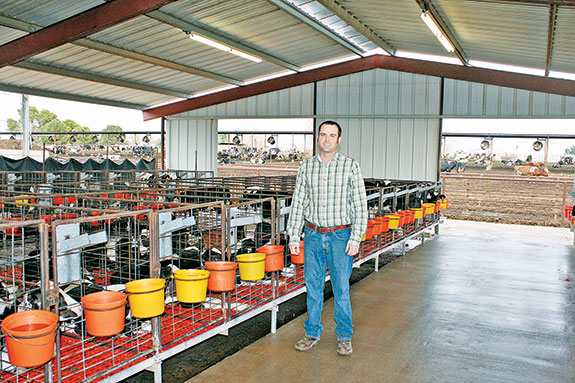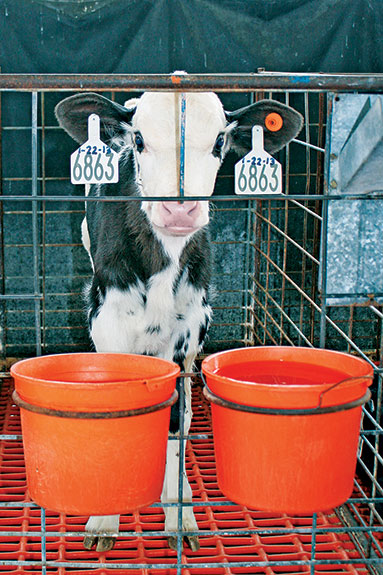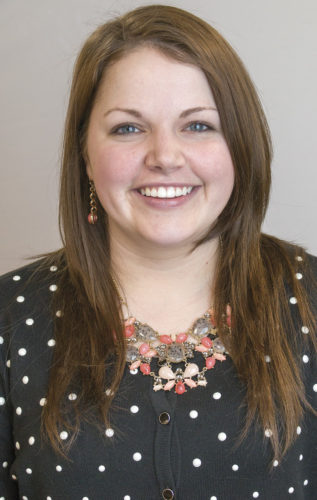This article was #15 of the Top 25 most well-read articles on www.progressivedairy.com in 2013. It was published in the May 1, 2013 print issue. Click here for the full list of the Top 25. Buckeye, Arizona, dairyman Wes Kerr shared his passion for polled genetics in this feature article. He explained that by eventually eliminating dehorning through breeding polled, his farm would see advantages in calf labor and take a step in the right direction of animal welfare. We asked Kerr, Q. What progress has been made in your polled breeding program?
So far we are very pleased with the performance of our polled Holsteins even during Arizona’s hot summer temperatures. We have enough first-lactation heifers milking to do a side-by-side comparison with their horned herd mates. We looked at all first-lactation animals who freshened during the same time period to draw an unbiased conclusion on their performance in our herd.
Comparisons of heifers fresh between 6/11/2013 and 10/22/2013 polled vs. horned:
Total number of animals at lactation after first freshening:
- Polled – 21, Horned – 125
Average DIM:
- Polled – 108.8, Horned – 101.7
Average milk per day:
- Polled – 66.5, Horned – 65.9
Average 305-day milk yield:
- Polled – 22,718, Horned – 22,159
Based on the positive performance of the polled Holsteins in our herd, we are moving forward with using the best heterozygous and homozygous polled bulls available. In our calf barn, we now have the first known homozygous polled Holsteins to be born in Arizona. With these animals, we can use any bull in the breed and still be guaranteed to have a polled calf. For us, breeding for polled has not left our cows lacking anything except for horns.
ARTICLE :
 “My goal is that my grandchildren will never know cows had horns.”
“My goal is that my grandchildren will never know cows had horns.”
It’s a bold statement, but one that Wes Kerr believes in wholeheartedly.
Kerr, a young dairyman in Buckeye, Arizona, views polled genetics the way of the future for dairy breeding.
“Even if it doesn’t happen in the industry, it’s going to happen here on this farm,” he says.
Currently, 46 percent of Kerr’s heifers are polled, signified by an orange button ear tag and accounting for a total of 170 polled females. He’ll have another round of polled heifers calving in June.
Within five years, he estimates that 90 percent of his 2,000-head herd will be polled.
Developing the passion for polled genetics
Kerr says he’s been interested in genetics ever since he began incorporating red and white genes into the herd. While polled animals were certainly in the Kerr Dairy herd, it wasn’t something the family was paying attention to. That is, until the labor supply became a concern.
In 2012, the Arizona government halted any new hiring because of issues related to immigration reform.
Kerr saw an opportunity for labor savings in the calf barn, where he could eventually eliminate the task of dehorning from an employee’s responsibilities.
He began searching for information about polled genetics online and found several resources, particularly from research at Penn State University with polled Holsteins.
The confirmation for Kerr came when he found polled cows already in the herd, one of which was in her fifth lactation.
“The gene has definitely been in the breed,” Kerr says. “It just wasn’t something we were interested in because we were focusing on other components. Now we’re ready to take the next step and breed for something else.”
View a photo slideshow to see additional images of Kerr's polled heifers and Arizona dairy farm. Story continues below photo slideshow.
The polled plan
He took the next step by buying polled semen in bulk to keep costs down. He purchased from many different A.I. companies, using 10 different bulls.
His selections of bulls are descendants out of some of the famous bull families, including Shottle and Goldwyn.
“These are all out of the bulls everyone’s using anyway. It’s just the polled gene came from the dam’s side,” he says.
Although this is only his first crop of calves while aggressively using polled genetics, Kerr is already an avid believer.
“There aren’t many things we can do in the dairy industry to improve the bottom line that take this little effort,” he says.

His strategy going forward is to use polled genetics on all cows in the herd with horns.
He’s using 100 percent polled bulls with this year’s crop of heifers, and he hopes to get there soon with the cows.
On his polled heifers next year, he plans to use a mix of polled bulls and the best of whatever the breed has to offer at that time.
“I hope to be able to use a homozygous polled bull for a 100 percent chance of polled offspring,” he says.
“But I’ll also use the best of what’s out there – proven bulls, genomic bulls – since 50 percent of that offspring will be polled from the dam’s genes.”
Kerr says naysayers of polled genetics point to the fact that there’s currently a small gene pool. His response is that there won’t be one for long.
“Once you get the polled heifers and cows into your herd, you can use any bull you want,” he says. “You can then focus your efforts on traits like calving ease or udder conformation.”
In the genetic roadmap he’s laid out, Kerr plans to be able to soon sell polled bulls from his own herd.
Animal welfare
But profits and labor savings aren’t the only driving factors in Kerr’s mind.
“This is a giant step toward showing activists we’re serious about animal welfare,” he says.
Kerr points to areas in Europe where a veterinarian has to be present for dehorning calves. He believes similar regulations will make their way to the U.S.
“There’s really only one ‘fun’ or 100 percent humane way to dehorn calves, and that’s at conception,” he says. “I can’t wait for the day when I’m able to sell all of my dehorning equipment.”
He says one of his hesitations using polled genes – and an argument he’s heard from other farmers – is how to tell whether or not a calf has horn buds and how to avoid dehorning a calf that’s already polled.
“But I’ve been able to tell probably 95 percent of the time right at birth whether or not a calf has horn buds,” he says.
In the not-so-clear-cut cases, Kerr simply waits to see. If there are horns, he says, they’ll grow.
The current method at Kerr Dairy for dehorning calves at 2 to 2½ months old is to use lidocaine and then cauterize the horn buds.
He admits to a few weeks of growing-pain mistakes where he or an employee had tagged an animal, thinking it was polled, only to discover the growth of horns a couple weeks later. Since that time, there haven’t been any issues.
Industry trends in polled genetics
Kerr says he doesn’t mind “being the first one in and showing others it can be done,” but he estimates he won’t be one of the only polled advocates for long.
“I think once people get comfortable with the decision and realize they’re not giving up milk production, polled genetics is really going to take off, and the price of polled semen will go up,” he says.
He believes that within 10 years, 50 percent of the bulls on the market will be identified as polled.
In his opinion, polled genetics will take off at a quicker rate on smaller dairies where changes are often easier to implement.
“On smaller dairies, the people making the breeding decisions are the same ones doing the work in calf care,” he says. “It’s harder to do that on larger farms.”
Even on his own operation, he had to talk his father into letting him try out polled genetics.
“I thought he might have a heart attack, but he let me pursue it,” he says. “Then again, Dad is so forward-thinking. We’re always trying to be one step ahead of where the industry is heading.”
So in the mindset of the Kerr family, the question isn’t “Why polled?” but “Why not polled?”
“It’s in our ability to introduce these genes; we know the genes exist,” Kerr says. “There’s no reason not to go for it.” PD
PHOTOS
TOP: Arizona dairyman Wes Kerr is so passionate and confident about polled genetics that he hopes to soon be able to get rid of his dehorning equipment.
BOTTOM: Polled heifers are identified with an orange button ear tag. Photos by Emily Caldwell.

Emily Caldwell
Editor
Progressive Dairyman







